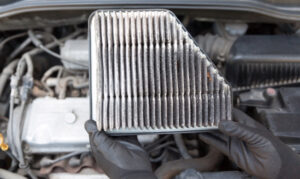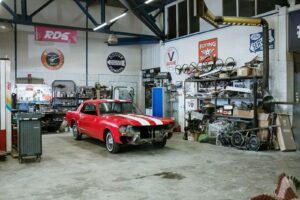Introduction
An overheating engine can lead to serious damage and costly repairs. It’s important to understand how to prevent and fix an overheating engine to keep your car running smoothly.
Prevention
Check Your Coolant Level
The first step in preventing an overheating engine is to check your coolant level. Make sure the coolant level is at the correct level, and that your coolant is clean and free of debris. If the coolant level is low, add more coolant to the system.
Check Your Radiator
The radiator is responsible for keeping the engine cool. Make sure the radiator is clean and free of debris. If the radiator is dirty, clean it with a radiator cleaning solution.
Check Your Hoses
Check the hoses that carry coolant to and from the engine. Make sure the hoses are in good condition and not leaking. If the hoses are damaged, replace them.
Check Your Thermostat
The thermostat regulates the temperature of the engine. Make sure the thermostat is working properly. If the thermostat is stuck open, the engine will not get hot enough, and if the thermostat is stuck closed, the engine will overheat.
Check Your Water Pump
The water pump is responsible for pumping coolant through the engine. Make sure the water pump is working properly. If the water pump is not working, the engine will overheat.
Fixing
Stop the Engine
If your engine is overheating, the first thing you should do is stop the engine. Continuing to drive an overheating engine can cause serious damage.
Check the Coolant Level
Check the coolant level and make sure it is at the correct level. If the coolant level is low, add more coolant to the system.
Check the Radiator
Check the radiator and make sure it is clean and free of debris. If the radiator is dirty, clean it with a radiator cleaning solution.
Check the Hoses
Check the hoses that carry coolant to and from the engine. Make sure the hoses are in good condition and not leaking. If the hoses are damaged, replace them.
Check the Thermostat
Check the thermostat and make sure it is working properly. If the thermostat is stuck open, the engine will not get hot enough, and if the thermostat is stuck closed, the engine will overheat.
Check the Water Pump
Check the water pump and make sure it is working properly. If the water pump is not working, the engine will overheat.
Precautions
Do not open the radiator cap when the engine is hot. Do not remove the radiator cap if the engine is hot. If you remove the radiator cap while the engine is hot, the coolant can boil over and cause serious burns.
Use gloves and goggles
When working on the engine, it is important to use gloves and goggles to protect yourself from the coolant. Coolant can cause serious burns if it comes into contact with your skin.
Check Your Car Regularly
It’s important to check your car regularly to make sure everything is in good working condition. This will help you to catch any problems before they become serious.
Conclusion
An overheating engine can be a serious problem, but by following these steps, you can prevent and fix an overheating engine. Remember to check your coolant level, radiator, hoses, thermostat, and water pump regularly, and to use precautions when working on the engine. With proper care and maintenance, you can keep your car running smoothly and avoid costly repairs.
Additional steps
Check the Fan
The fan helps to cool the engine by blowing air through the radiator. Make sure the fan is working properly. If the fan is not working, the engine will overheat.
Check the Belts
Check the belts that drive the water pump and fan. Make sure the belts are tight and in good condition. If the belts are loose or damaged, they can cause the water pump or fan to stop working, leading to an overheating engine.
Check the Head Gasket
The head gasket seals the engine’s combustion chamber. A damaged head gasket can cause coolant to leak into the combustion chamber, leading to an overheating engine. If you suspect a damaged head gasket, it’s important to have it checked by a mechanic.
Check the Timing
The timing of the engine controls the opening and closing of the valves. If the timing is off, it can cause the engine to overheat. If you suspect a timing issue, it’s important to have it checked by a mechanic.
Check the Fuel System
A malfunctioning fuel system can cause the engine to overheat. If you suspect a fuel system issue, it’s important to have it checked by a mechanic.
Check the Ignition System
A malfunctioning ignition system can cause the engine to overheat. If you suspect an ignition system issue, it’s important to have it checked by a mechanic.
Check for Obstructions
Make sure there are no obstructions blocking the air flow through the radiator. This can cause the engine to overheat.
Check the Air Conditioning
Air conditioning can put extra strain on the engine and cause it to overheat. If you’re using your air conditioning and your engine starts to overheat, turn off the air conditioning and see if that helps.
Check the Tires
Underinflated tires can cause the engine to work harder and overheat. Make sure your tires are properly inflated.
Check the Drive Belts
Check the drive belts for cracks, glazing or fraying. These can cause the engine to overheat.
Check the Timing Belt
Check the timing belt for cracks, glazing or fraying. These can cause the engine to overheat.
Check the Timing Chain
Check the timing chain for looseness or stretching. These can cause the engine to overheat.
Conclusion
An overheating engine can be caused by a variety of issues, but by following these steps and checking your coolant level, radiator, hoses, thermostat, water pump, fan, belts, head gasket, timing, fuel system, ignition system, air conditioning, tires, drive belts, timing belt, and timing chain, you can prevent and fix an overheating engine. Remember to use precautions when working on the engine, and always have any suspected problems checked by a mechanic to ensure proper diagnosis and repair. With proper care and maintenance, you can keep your car running smoothly and avoid costly repairs.










